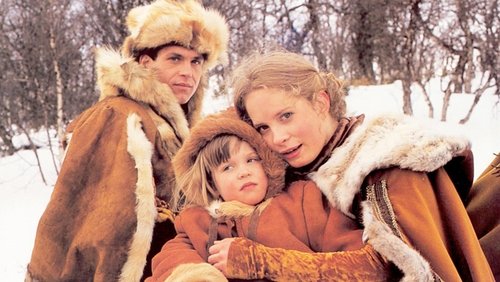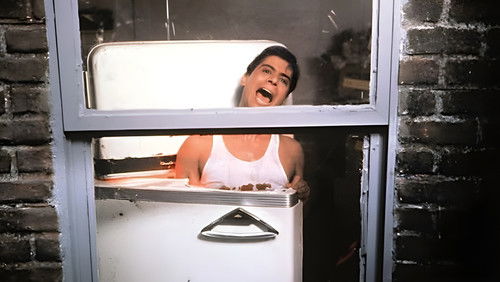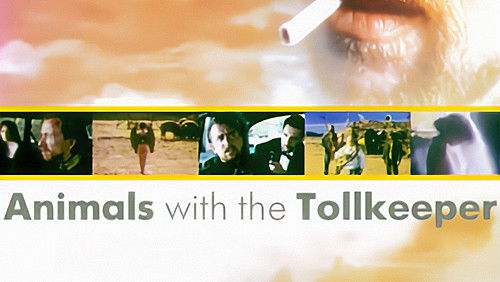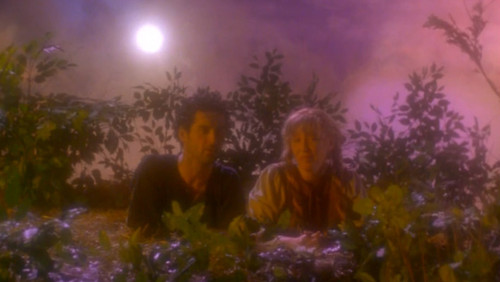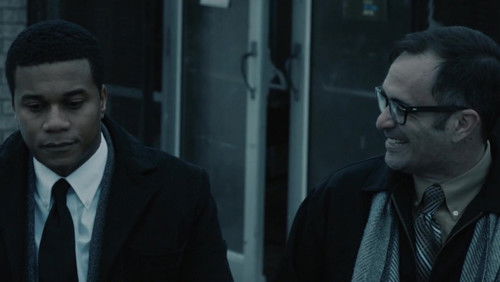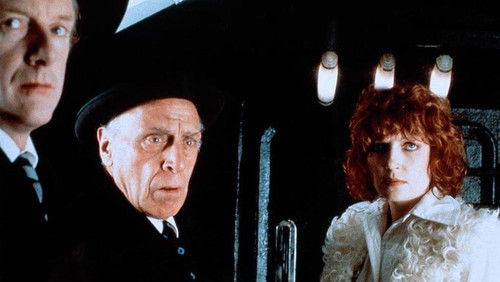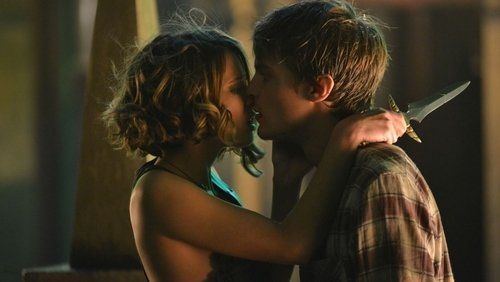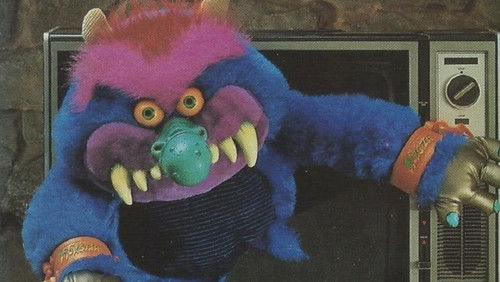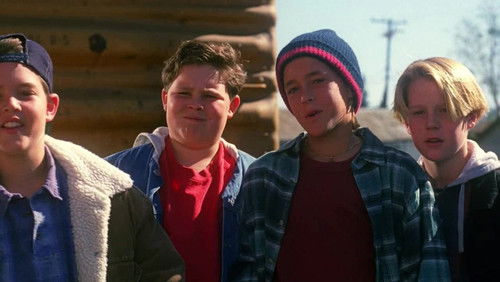Yume jû-ya (2006)
43KYume jû-ya (2006). 1h 40m | Not Rated
“Ten Nights of Dream (or Jume Ju-ya) is based on a book written by Natsume Soseki, one of Japanu0026#39;s biggest writers. In honor of his prophecy – he claimed that 100 years after writing his book theyu0026#39;d still be unraveling his mysteries – Ten Nights of Dream was born. An eclectic group of directors was drawn to the project and they were each given one dream to work with. The result is 10 shorts spanning around 10 minutes each, bundled inside one anthology film.u003cbr/u003eu003cbr/u003eThe first short was directed by Akio Jissoji, no small fry as he is famed for his work on Ultraman. Not long after finishing his short he died at age 69 of stomach cancer, but his age never really shows in his work. It starts of pretty normal but slowly stage effects start creeping through the cracks of the film and not long after that we are on the stage itself, watching the actors go about their work. Thumbs up for some awesome lighting effects and the level of involvement he remains to hold even when the audience is pulled out of the film time and time again. A very worthy opener. 4.0*/5.0* u003cbr/u003eu003cbr/u003eSecond short was in the hands of Kon Ichikawa, another Japanese oldie that died not long after this film was released. As opposed to the first short, his contribution does show his age as the black and white visuals are quite classical both in form and editing. It does go well with the u0026quot;silentu0026quot; treatment and intertitles his short houses, but looking back itu0026#39;s one of the most faceless contributions to the anthology. Apart from the atmospheric music thereu0026#39;s little to catch ones attention. 3.5*/5.0* u003cbr/u003eu003cbr/u003eThe third short brings us in more modern waters, as horror icon Takashi Shimizu himself picks up the controls. He treads in familiar water with the third dream and consequently doesnu0026#39;t really surprise, though the effect is there alright and his short contains some creepy segments. Not really the thrill scares but much closer to his work in Rinne. 3.5*/5.0* u003cbr/u003eu003cbr/u003eUp next is another Shimizu whou0026#39;s slowly making a name for himself by picking the right projects. Atsushi Shimizu was one of the few that could manage the low budget in the Umezu Kazuo anthology and proves again that he knows how to take care of limited means. The CGi isnu0026#39;t technically accomplished but he makes sure it doesnu0026#39;t hurt the atmosphere of the short and uses his 10 minutes remarkably well to build up a mysterious whole. His short is probably one of the most solid inside this anthology. 4.0*/5.0* u003cbr/u003eu003cbr/u003eConcluding the first u0026quot;normalu0026quot; part of the anthology is Keisuke Toyoshima, setting his short in the same field as the work of Takashi Shimizu but giving it a creepier swing. The shrouded figures are pretty whacked-out, the tale dark and strange and the effect of the short is all-round weird. A good and atmospheric short with a marvelous ending that makes a clean bridge to the weirdness displayed in the second part of the anthology. 4.0*/5.0*u003cbr/u003eu003cbr/u003eWhen Matsuo Suzuki takes the stage things are about to get real fun. Shot as though the short is 50 years old, it features a Kurosawa-like setting of farmers gathering to watch a mysterious wood carver. Itu0026#39;s all pretty vague until some 90s dance music starts playing and our wood carver starts doing a robot dance. From there on, the weirdness goes completely off the scale. All the dancing leads up to a mystical single blow to a block of wood. Suzukiu0026#39;s short is in black and white and with the dance music playing it does resemble the early work of Sogo Ishii and Shinya Tsukamoto a fair bit, though the effect is a lot tamer and more focused on humor. Pretty cool short though. 4.0*/5.0* u003cbr/u003eu003cbr/u003eDefinite eye catcher of this anthology is Yoshitaka Amanou0026#39;s piece. A mixture of 2D and 3D, for the first time his artwork really comes to life on the big screen. Even though this is not the first time his artwork is used on animated projects, it never felt as much as Amano as it does in this film. Sadly the English voice acting is terrible and the character animation is pretty bad, but the colors and designs are so overwhelming itu0026#39;s easy to forget about the negative points. One of the best visual artists out there, and I can only hope to see his work evolve in this direction on the big screen. Simply stunning. 4.5*/5.0*u003cbr/u003eu003cbr/u003eNobuhiro Yamashita is another young director making a name for himself, dabbling in comedy and drama. Itu0026#39;s hard to say much about this short as there was no way at all I could make sense of it. As a dream it works wonders but the difference in style and tone made me lose track a couple of times in these short 10 minutes. A fun short and probably the one that stays closest to its dream roots, but it completely lost me after only a short time. 4.0*/5.0* u003cbr/u003eu003cbr/u003eMiwa Nishikawa is the only director of the bunch that goes for a purely dramatic approach and succeeds quite well. Her short features a nice tale of a family shred to pieces by war, with all pieces of the puzzle slowly coming together. Nothing quite original as many Asian u0026quot;horroru0026quot; tales end as a simpler, down-to-earth tragedy,but Nishikawa pulls it off rather convincingly within the little time she has. 4.0*/5.0*u003cbr/u003eu003cbr/u003eClosing off the anthology is cult-favourite Yûdai Yamaguchi. The man is nothing short of a madman genius and from the moment his weird tale of pig mutation starts thereu0026#39;s no holding back the weirdness. Yamaguchi is one of the few that has the flair to bring typical manga and anime elements to live action cinema and again he succeeds with passion. 4.5*/5.0*”

